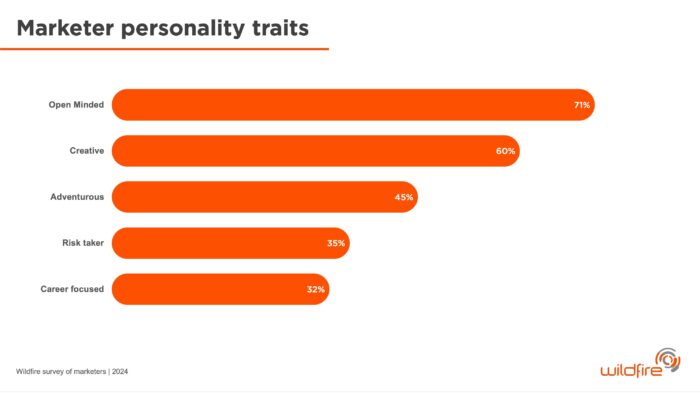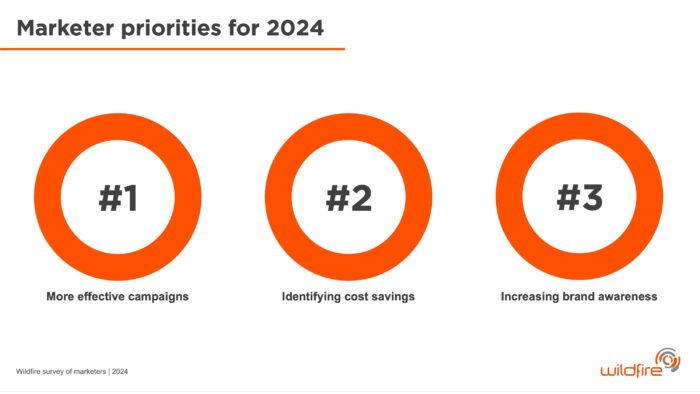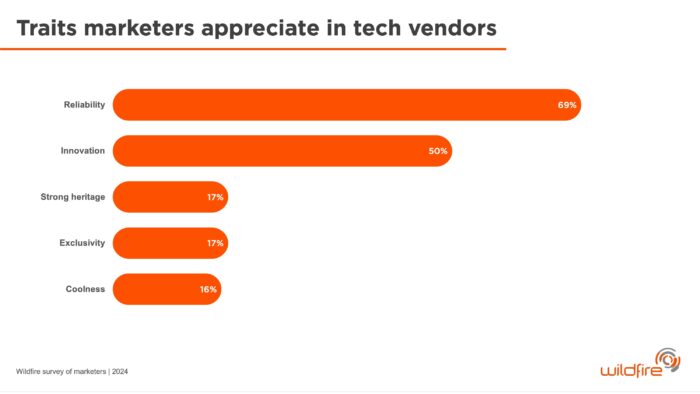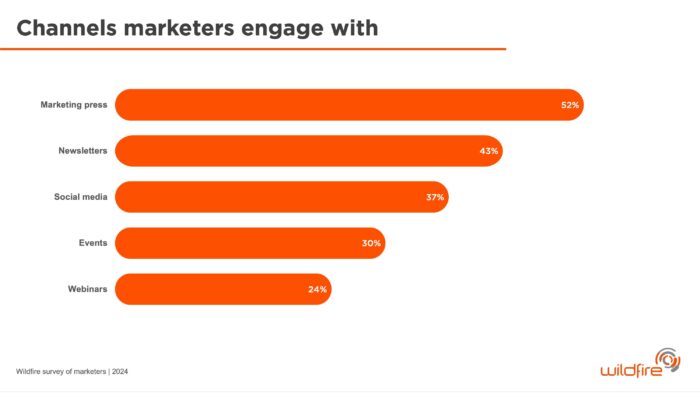




Thanks to generative AI, global martech spending is set to surpass $215 billion by 2027. While that’s great news for martech vendors, it’s also driving intense competition.
As marketers become overwhelmed with choice, martech brands need to find new ways to stand out in the crowd. The best way to do that is to build an understanding of what marketers really want from your technology. What are their goals, their ambitions, and their challenges?
To help, we’ve analysed data from over 1,000 UK marketers responsible for martech purchases. Here’s everything you need to know for your next campaign:
The majority of today’s marketers describe themselves as ‘open minded’ (71%) and ‘creative’ (60%), so it’s likely they’ll appreciate innovative approaches and fresh ideas.
But just because marketers are open minded, doesn’t mean they want to take risks. In fact, only 35% say they are natural risk takers. They’re creative, but also cautious.

When promoting martech products, it’s also worth bearing in mind that marketers don’t make decisions alone. Your average martech buyer involves 1-2 colleagues in decision-making, typically their bosses at the C-level.
When planning your approach, factor in these additional decision makers. While marketers are open-minded, only 28% of those surveyed said their company is open to new ideas and processes. Marketers may value creativity and innovation, but often their bosses want a safer route.
Given this multi-stakeholder buying process it’s important for martech vendors to strike the right balance — appeal to marketers’ creativity while providing hard facts to be credible to the C-suite. A creative approach, centred on achieving meaningful business goals.
The biggest challenge facing marketers in 2024 is the current economic climate of those surveyed. But while cost-cutting is high on the list of marketer priorities, it’s not #1.
Instead, the big focus is on improving the overall effectiveness of marketing campaigns and building brand awareness also features.

To appeal to marketers in 2023, showing how your technologies will help to achieve these three goals is essential. Show that your martech enables more effective campaigns, drives brand awareness, and delivers efficiencies. That’s the holy trinity for today’s marketers.
When it comes to selecting new martech vendors, marketers demand reliability and innovation above all else.

It’s easy to assume that a reputation for reliability is exclusively available to the biggest brands, with a long history. Not so. In fact, fewer than one in five marketers care about brand heritage. They want to know that a new product does what it says on the tin. What’s the simplest way to do that? Well:
So, you know you need to demonstrate reliability and innovation. But how do you reach marketers with your narrative?
As is so often the case in B2B marketing and PR, there is no one answer to the question of where to reach this audience. That said, there are a few consistent patterns.
More than half of marketers (52%) still read the marketing press. Typically, this spans major publications such as Marketing Week and The Drum, as well as a host of smaller websites and blogs. Many of these publications also send out monthly email newsletters, which 43% of marketers say they read.
While many marketing trade sites have limited circulations, they often boast a highly committed readership. They’re also where 59% of marketers head to learn about new martech products. A targeted media relations programme is essential.

Events also have a role to play, with almost a third (30%) of marketers attending industry conferences. Most importantly, 74% if marketers say events are often the go-to destination when on the hunt for new martech products.
And of course, there’s social media. Many marketers are avid social media users for work and platforms like LinkedIn and Instagram are great ways to reach them. Top of the list, however, is YouTube. Marketers not only visit these sites regularly — 67% actually use them to research new suppliers. Having content and case studies readily available on YouTube is a must.
Promoting your martech brand is no easy task. It takes strategy, content, and creative campaigns, not to mention building great relationships with media and industry influencers. To find out how Wildfire can help you achieve all of these things and more, check out our martech PR services. Or for an example of Wildfire in action, read our case study below.

Using original research, media relations and influencers, we built a campaign proving the power of Fullstory’s insights as an alternative to traditional customer feedback platforms.
Read the case studyTo initiate the download of this awesome content, please just tell us a little about yourself.
We want to make sure we are delivering the right information to the right people. In return, we promise never to:
For more information about how we handle your data and protect your information, please visit our Privacy Policy